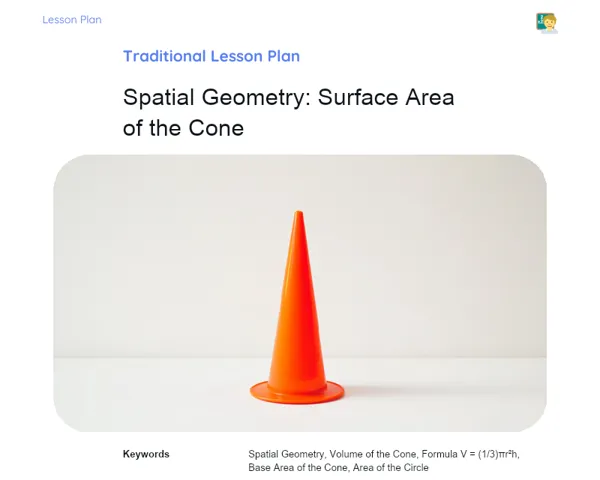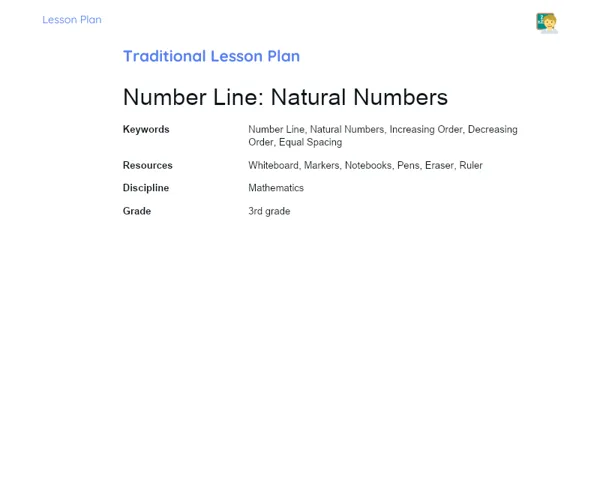Lesson Plan | Lesson Plan Iteratif Teachy | Possible Outcomes
| Keywords | digital methodology, active methodology, practical learning, probability, experimentation, possible outcomes, digital activities, dice rolling, frequency, collaboration, gamification, social media, 360° feedback, critical reflection, student autonomy |
| Resources | smartphones, computers, online dice-rolling apps, spreadsheet software (Google Sheets), video editing apps, file sharing platforms (Google Drive, WhatsApp), quiz creation platforms (Kahoot, Quizizz, Google Forms), digital presentation tools (slides) |
| Codes | - |
| Grade | 5th grade |
| Discipline | Mathematics |
Goal
Duration: 10 - 15 minutes
The purpose of this lesson plan stage is to provide a clear and detailed understanding of the essential concepts of random experiments and their possible outcomes. This prepares students for practical activities, ensuring they know what to look for and how to evaluate the probability of outcomes.
Goal Utama:
1. Understand and identify all possible outcomes of a random experiment.
2. Estimate the probability of possible outcomes by assessing whether they are equally likely or not.
Introduction
Duration: 10 - 15 minutes
This initial stage aims to connect students to the topic in a practical and contextualized way, using digital tools that are a part of their daily lives. It sets the tone for the lesson, encouraging curiosity and active engagement from the start, and lays the groundwork for a deeper and more meaningful learning experience.
Warming Up
📱 Start the class by explaining to students that in our daily lives, we are constantly surrounded by events that occur randomly, much like rolling a die during a family board game. Then, instruct students to use their smartphones to find an interesting fact about probability or random experiments and share it with the class.
Initial Thoughts
1. 🎲 What does a random experiment mean?
2. 📌 What are the possible outcomes of rolling a six-sided die?
3. 🤔 Are all these outcomes equally likely? Why?
4. 📊 How can we apply probability in our everyday lives?
5. 🔍 Did anyone find a curious fact about probability? Can you share?
Development
Duration: 60 - 70 minutes (main activity) + 15 minutes (initial explanation and organization) = 75 - 85 minutes
The purpose of this stage of the lesson plan is to provide students with a practical opportunity to apply knowledge about probability in varied and engaging contexts. Using digital technologies, students will explore and deepen their understanding while having fun and working together with their peers.
Activity Suggestions
Activity Recommendations
Activity 1 - 🎲 Virtual Dice Rolling
> Duration: 60 - 70 minutes
- Goal: Understand the randomness of the outcomes of a random experiment and compare theoretical and observed probabilities.
- Deskripsi Activity: Students will use online dice-rolling apps to conduct various random experiments. They will need to record the results and use spreadsheet software (like Google Sheets) to analyse the frequency and probability of each outcome.
- Instructions:
-
Divide students into groups of up to 5 people.
-
Instruct each group to access an online dice-rolling app (available on smartphones and computers).
-
Each group should roll the dice 100 times and record the results in an online spreadsheet.
-
After completing the rolls, students should count the frequency of each outcome and calculate the observed probability.
-
Groups should compare their results with the theoretical probability (1/6 for each side of the die).
-
Ask the groups to prepare a short presentation (using slides) to share their findings with the class.
Activity 2 - 📹 Digital Influencers in Mathematics
> Duration: 60 - 70 minutes
- Goal: Relate the concept of probability to practical and everyday situations, utilizing digital media tools to communicate knowledge clearly and creatively.
- Deskripsi Activity: Students will create social media content (like a TikTok video or Instagram Reels) explaining how probability is used in games of chance, such as poker, roulette, or even everyday scenarios like weather forecasting.
- Instructions:
-
Divide students into groups of up to 5 people.
-
Choose one or more topics related to the use of probability in different contexts (games of chance, forecasts, etc.).
-
Students should research and gather information about the chosen topic.
-
Each group must create a script and shoot a short video (2 to 3 minutes) explaining the concept of probability and its application to their topic.
-
Videos should be edited using video editing apps available on phones or computers.
-
Upload the videos to a sharing platform (Google Drive, WhatsApp, etc.) so everyone can watch and comment.
Activity 3 - 🎮 Gamification: Math Treasure Hunt
> Duration: 60 - 70 minutes
- Goal: Apply knowledge of probability in a fun and interactive way, encouraging collaboration and critical thinking.
- Deskripsi Activity: Students will participate in a digital treasure hunt where they must solve probability-related problems to advance to the next clue. The activity will be conducted through an online platform that allows creating quizzes and interactive challenges.
- Instructions:
-
Divide students into groups of up to 5 people.
-
Use a quiz and challenge creation platform (like Kahoot, Quizizz, or Google Forms) to create a treasure hunt with probability problems.
-
Each clue will be a probability problem that students must solve to get the password unlocking the next clue.
-
Groups should collaborate to solve each problem and advance in the treasure hunt.
-
The first team to complete the treasure hunt will be the winner, but the focus will be on teamwork and the practical application of the studied concepts.
-
Conclude the activity with a discussion about the strategies used and the challenges faced during problem-solving.
Feedback
Duration: 20 - 25 minutes
The purpose of this stage of the lesson plan is to promote critical reflection, sharing of learnings, and the development of social skills through constructive feedback. This final phase integrates the acquired knowledge collaboratively, reinforcing the importance of communication and teamwork.
Group Discussion
📬 Group Discussion
Encourage a group discussion with all students, where groups share what they learned from conducting the experiment and their conclusions. Follow this brief outline to introduce the discussion:
- Introduction: Explain that they will have the opportunity to share their discoveries and hear those of their classmates.
- Sharing: Each group should present its findings focusing on the following points:
- What did they learn about randomness and probability?
- What challenges did they face and how did they overcome them?
- Any surprises in the results observed compared to the theoretical probabilities?
- Conclusion: After the presentations, summarise by highlighting common points and differences among the groups.
- Closure: Thank everyone for their participation and emphasise the importance of collaboration and collective learning.
Reflections
1. 🤔 Reflection Questions:
- How can understanding probability help in other areas of knowledge or in everyday situations?
- What strategies were most effective in obtaining accurate results during the experiments?
- How did the use of digital tools facilitate or hinder the completion of the experiments?
Feedback 360º
🔄 360° Feedback
Instruct students to perform a 360° feedback step, where each student should receive feedback from other students in their group regarding the activity. Guide the class to ensure that the feedback is constructive and respectful:
- Reinforce Importance: Explain that feedback is essential for everyone's growth and learning.
- Feedback Guidelines: Provide some guidelines to ensure that feedback is productive:
- Focus on specific behaviours and outcomes.
- Be clear and objective.
- Use respectful and constructive language.
- Feedback Round: Allot time for each student to share and receive feedback in small groups.
- Closure: Briefly summarise highlighted qualities and common areas for improvement, encouraging the use of feedback for future activities.
Conclusion
Duration: 10 - 15 minutes
📏 Purpose 📏
The purpose of this concluding stage is to consolidate and reflect on the lessons learned, ensuring that students understand the practical and modern relevance of the concepts studied. By connecting probability with real and contemporary life situations, the application of mathematical concepts in everyday life is reinforced, promoting lasting and meaningful understanding.
Summary
🎉 Summary 🎉
Imagine that each random experience is a surprise party! Sometimes you get a blue balloon, other times a red one, but what matters is the fun of not knowing what's coming next. Today, we explored how the outcomes of a random experiment are akin to the gifts at these parties — each with its probability of appearing. By using apps, spreadsheets, and even creating videos, we understood that knowing the frequency and probability of outcomes can transform any random event into a strategic game!
World
🌍 In Today's World 🌍
In today's digital landscape, where data and numbers are all around us, understanding randomness and probability is more relevant than ever. Whether in online games, social media, or even weather forecasting, we are constantly dealing with uncertainties and possible outcomes. Today's lesson shows us how to use these tools to make informed and strategic decisions, linking mathematics with the modern dynamics of life.
Applications
📊 Applications 📊
Understanding probability allows us to make safer and more informed decisions in daily life. From predicting rain, calculating chances in a board game, to making financial investments, this knowledge helps us assess risks and opportunities more accurately, making our lives more planned and less random.


